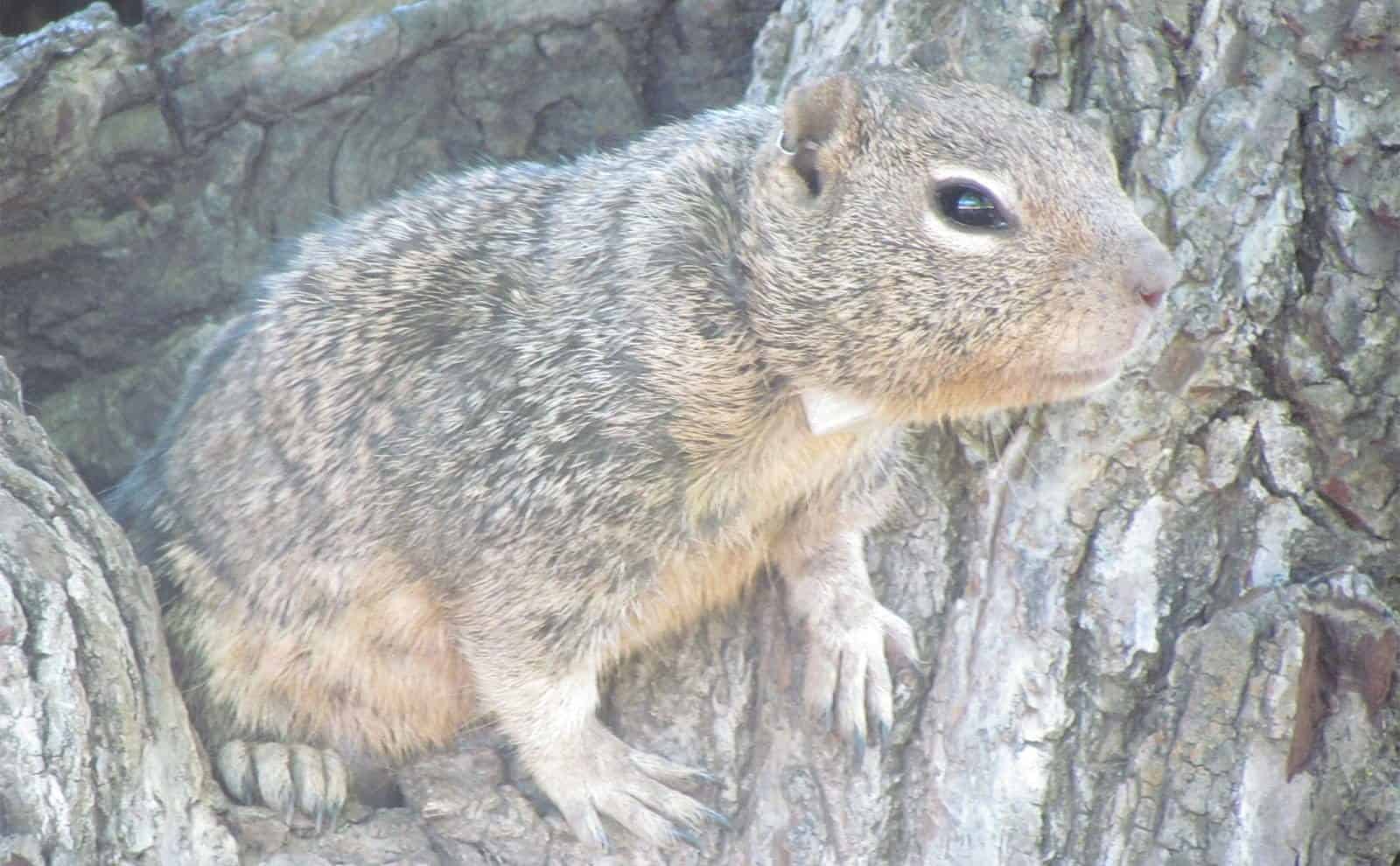Amanda Robin, a PhD student in ecology and evolutionary biology at UCLA, received a 2019 Mary Bowerman Science and Research Program grant to study squirrels, their burrows, and their behavior underground.
Building Burrows: Does It Give Squirrels an Advantage?
 California ground squirrels (Otospermophilus beecheyi) modify their environment by constructing burrows. Their construction activity increases biodiversity and habitat heterogeneity in the areas they inhabit across California.
California ground squirrels (Otospermophilus beecheyi) modify their environment by constructing burrows. Their construction activity increases biodiversity and habitat heterogeneity in the areas they inhabit across California.
Amanda says, “Despite our knowledge of their influence on community structure, we currently know little about how the use of these environmental modifications differs among individual squirrels and the extent to which this variation influences the evolutionary fitness of individual squirrels.”
Visualizing Underground Burrows and How Squirrels Use Them
 Amanda’s project aims to test the extended phenotype hypothesis, which predicts that natural selection should favor the capacity for animals to construct built spaces to enhance their fitness.
Amanda’s project aims to test the extended phenotype hypothesis, which predicts that natural selection should favor the capacity for animals to construct built spaces to enhance their fitness.
To study this, she and Dr. Jennifer E. Smith, a Professor at Mills College, as well as other students in Dr. Smith’s lab, are working on creating a detailed three-dimensional visualization of the underground burrow structures and characterizing their use by different squirrels.
Squirrel Collars: Collecting High-Resolution Data
![]() They deployed multi-sensor monitoring collars on squirrels that were fit with accelerometers, magnetometers, and gyroscopes. Each collar collects high-resolution movement data at speeds of 100 data points per minute.
They deployed multi-sensor monitoring collars on squirrels that were fit with accelerometers, magnetometers, and gyroscopes. Each collar collects high-resolution movement data at speeds of 100 data points per minute.
These motion data are currently being paired with detailed observations of individuals to create a computer model that can recognize behaviors using the movement data without human observation to uncover a more detailed picture of ground squirrel activity patterns.
Burrow use of these subjects will be tracked using existing radio-frequency identification antennas as a part of an existing long-term study at Briones Regional Park in northern California. They plan to integrate the sensory information to infer the underground paths taken by individual squirrels and to characterize their behavioral budgets.
Together, these data will yield new insights into the secret lives of these ecosystem engineers and into the fitness consequences of built-spaces on mammals in nature.

